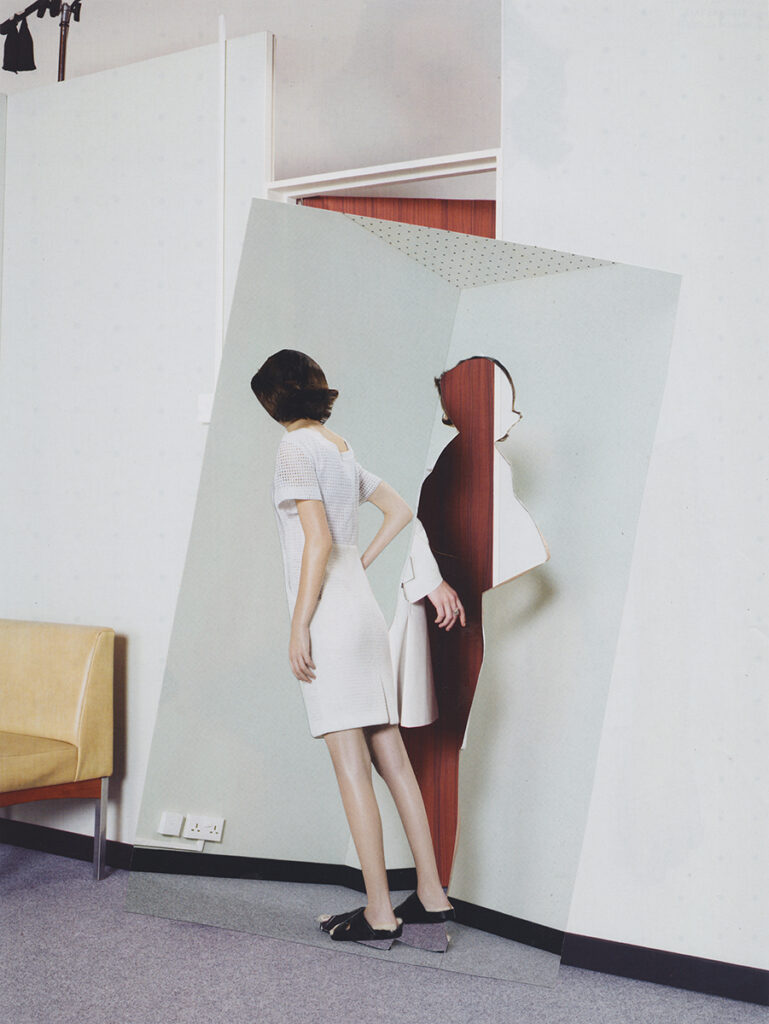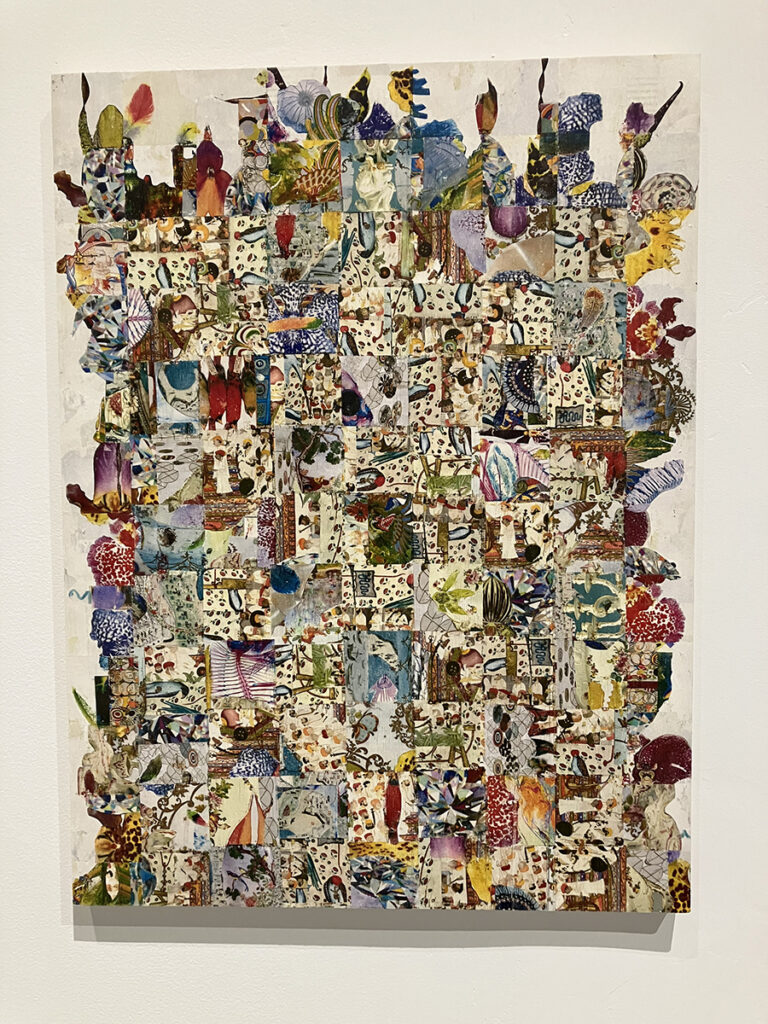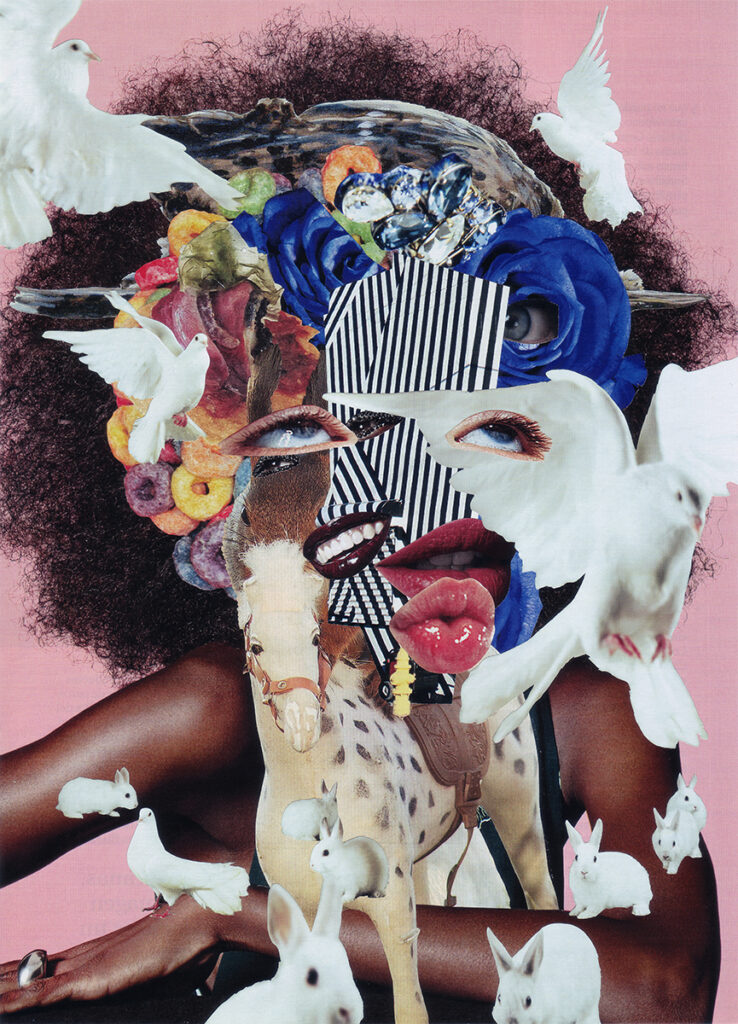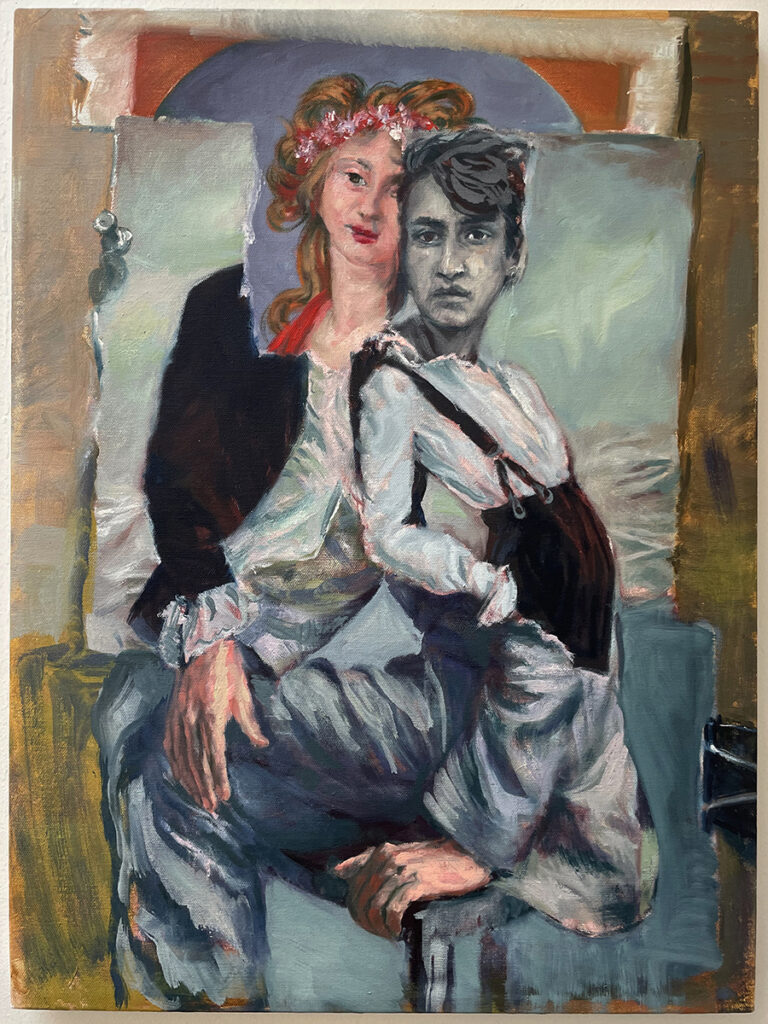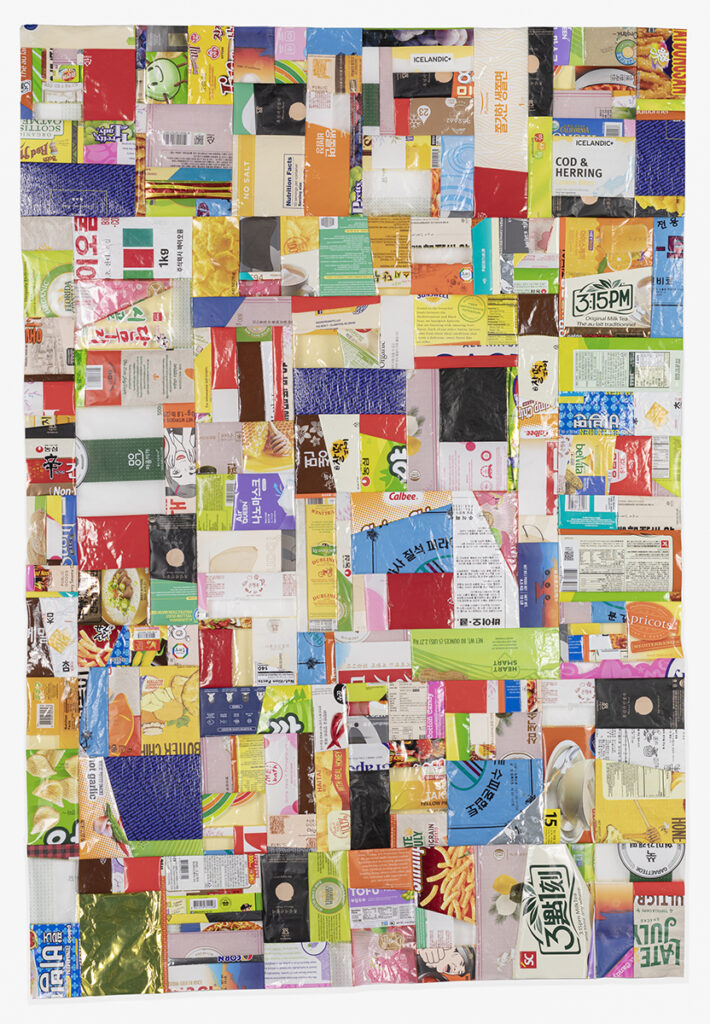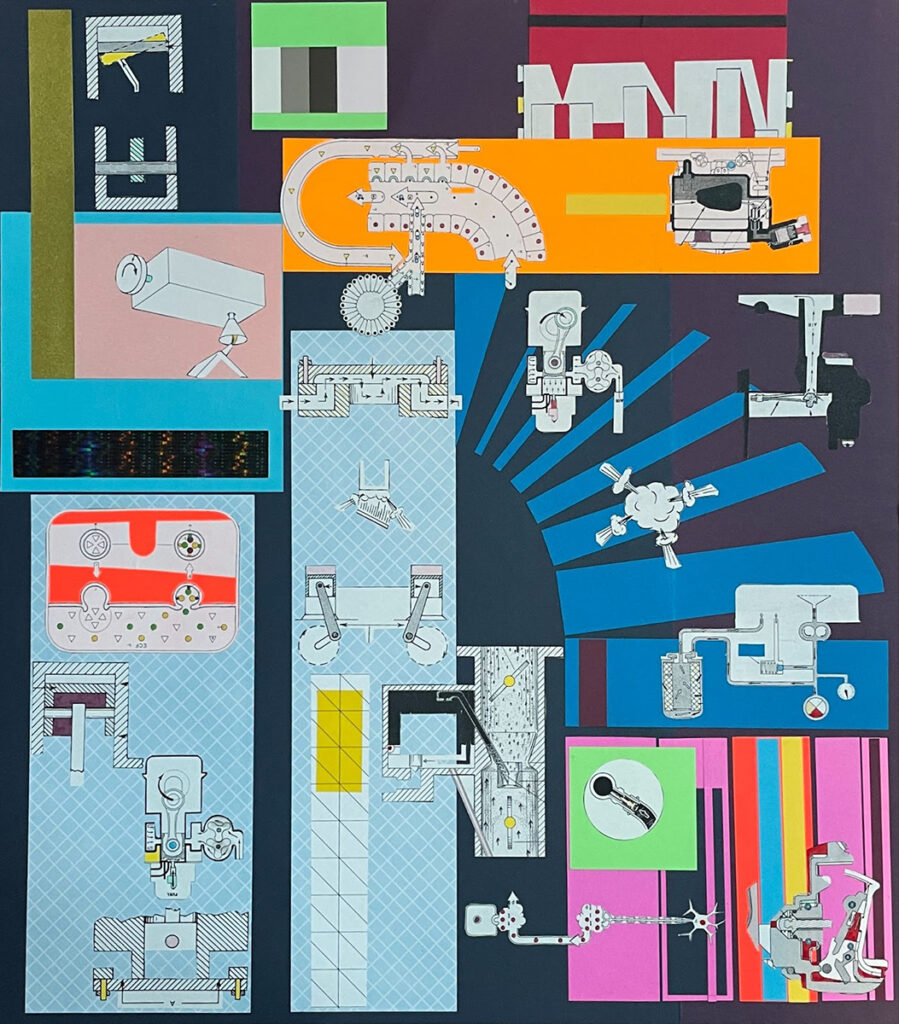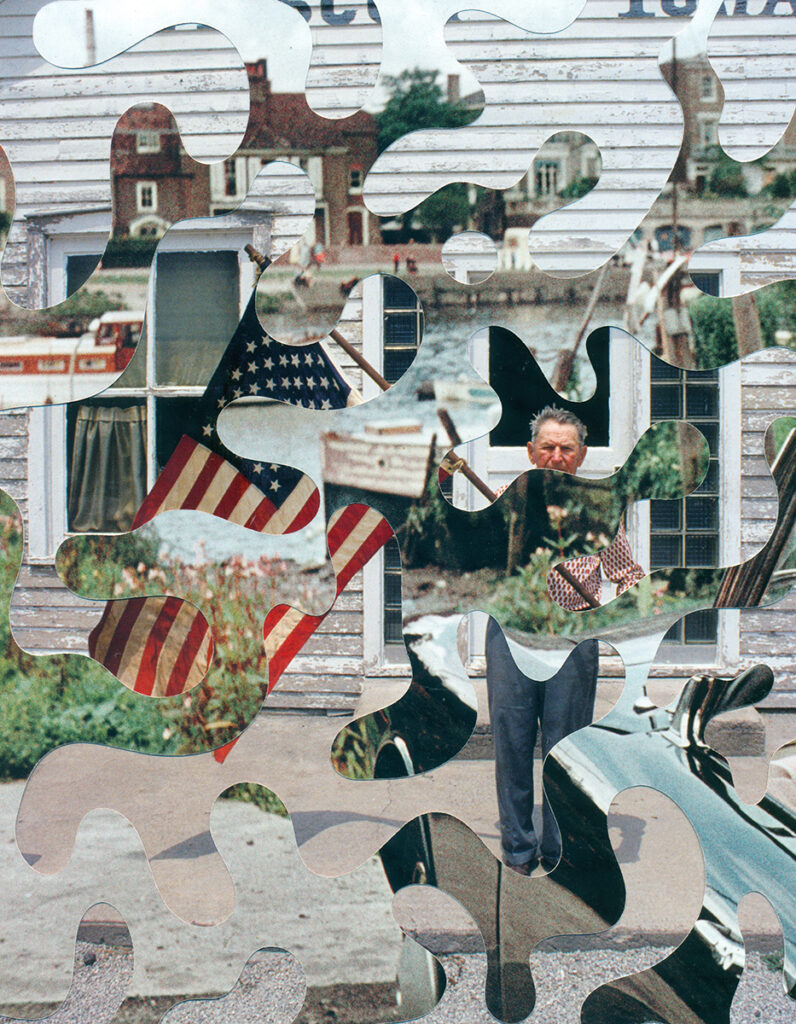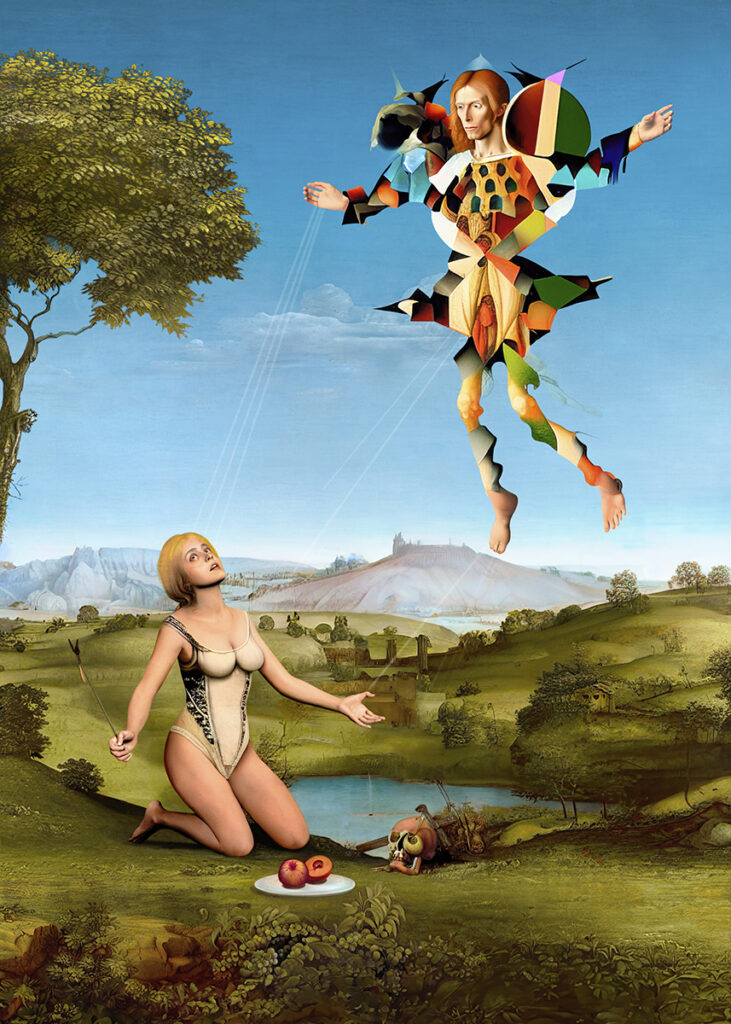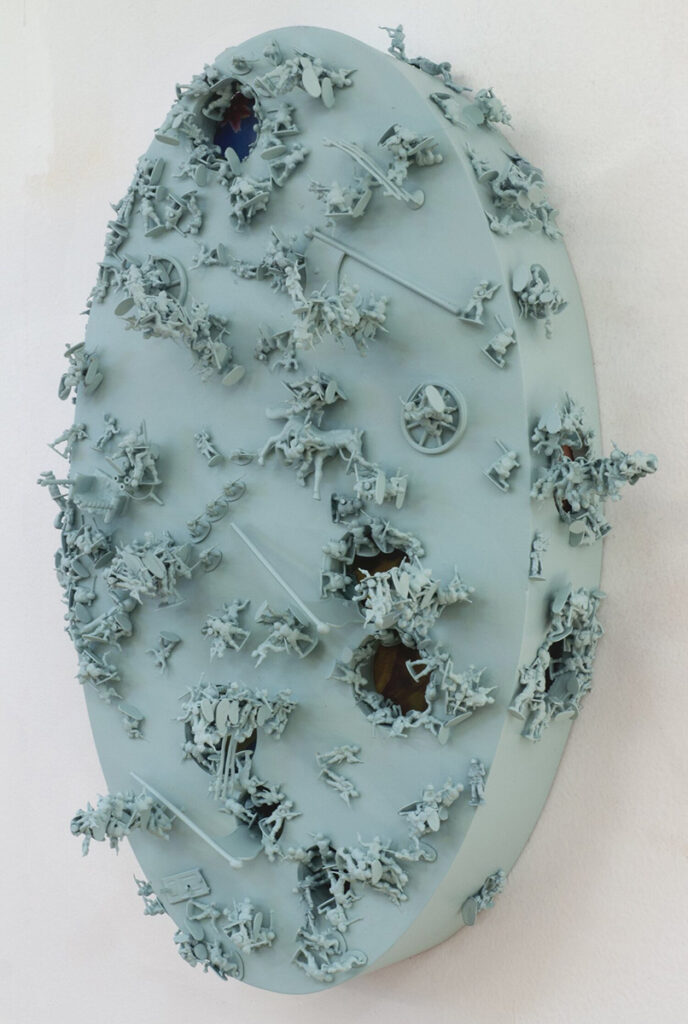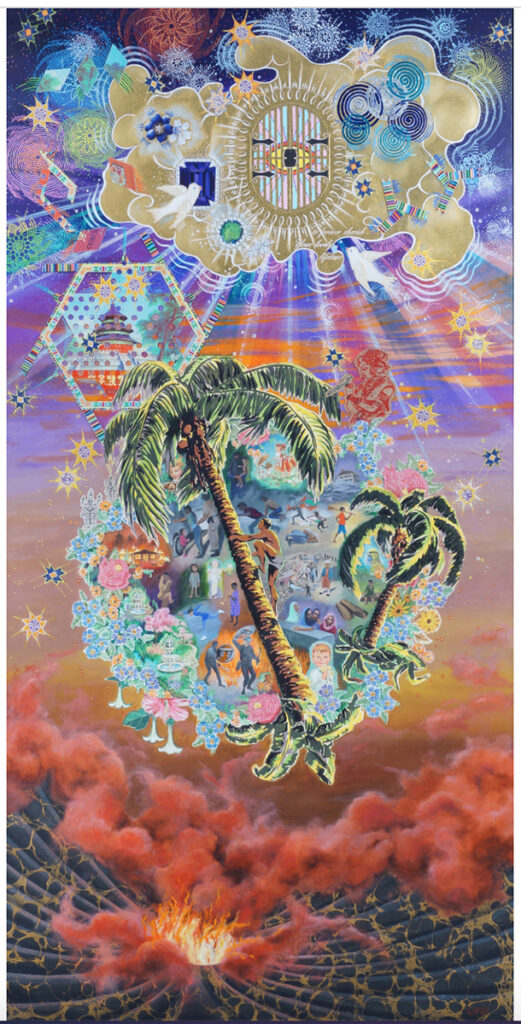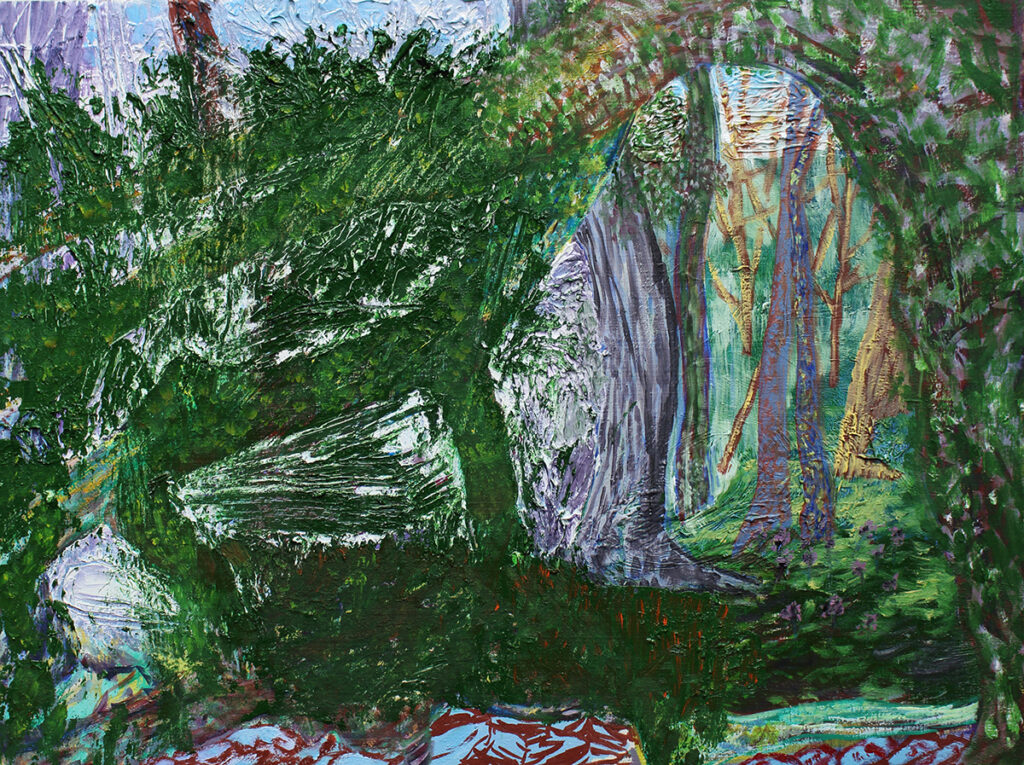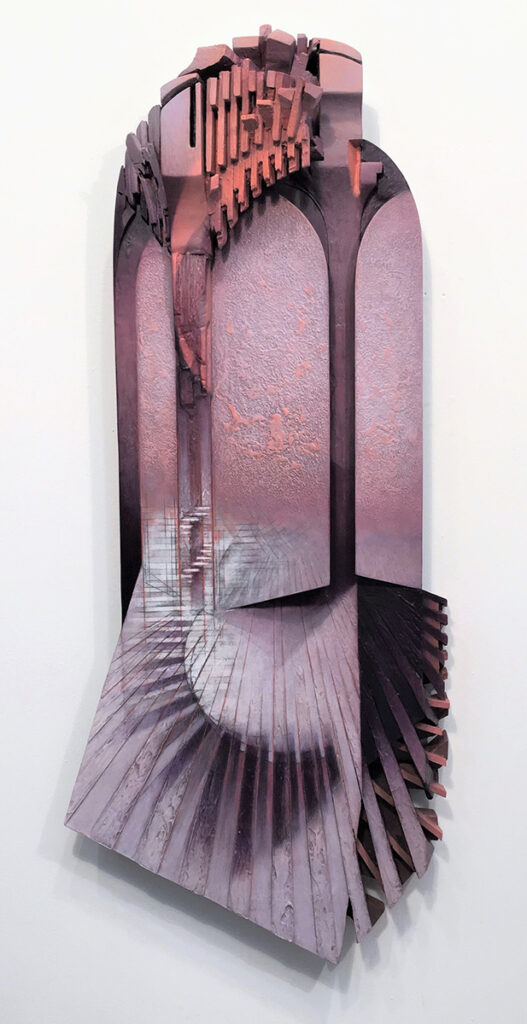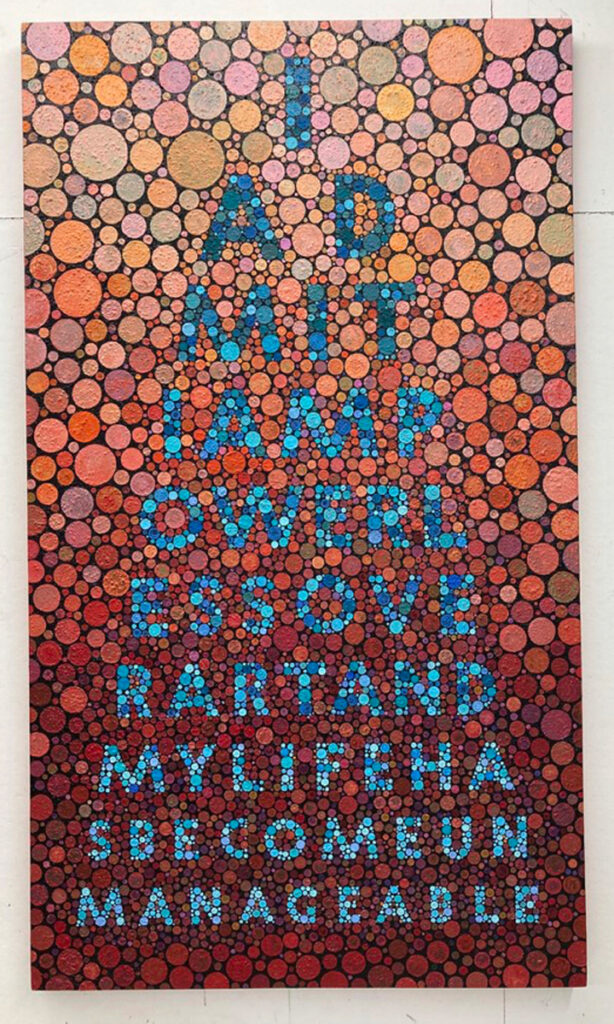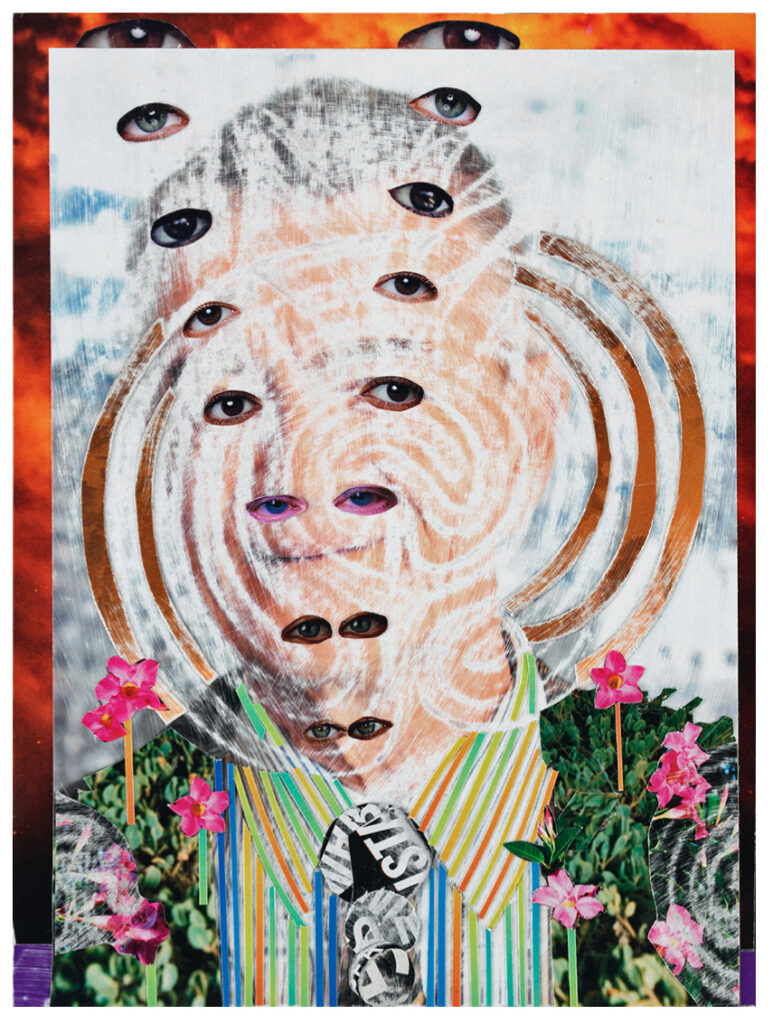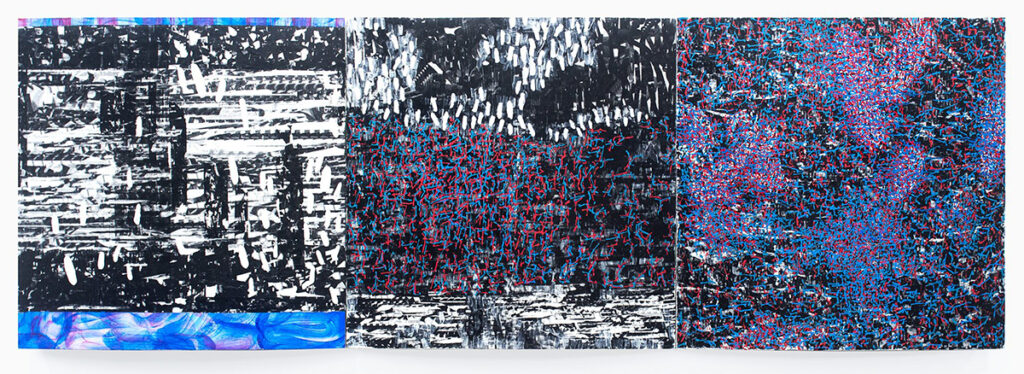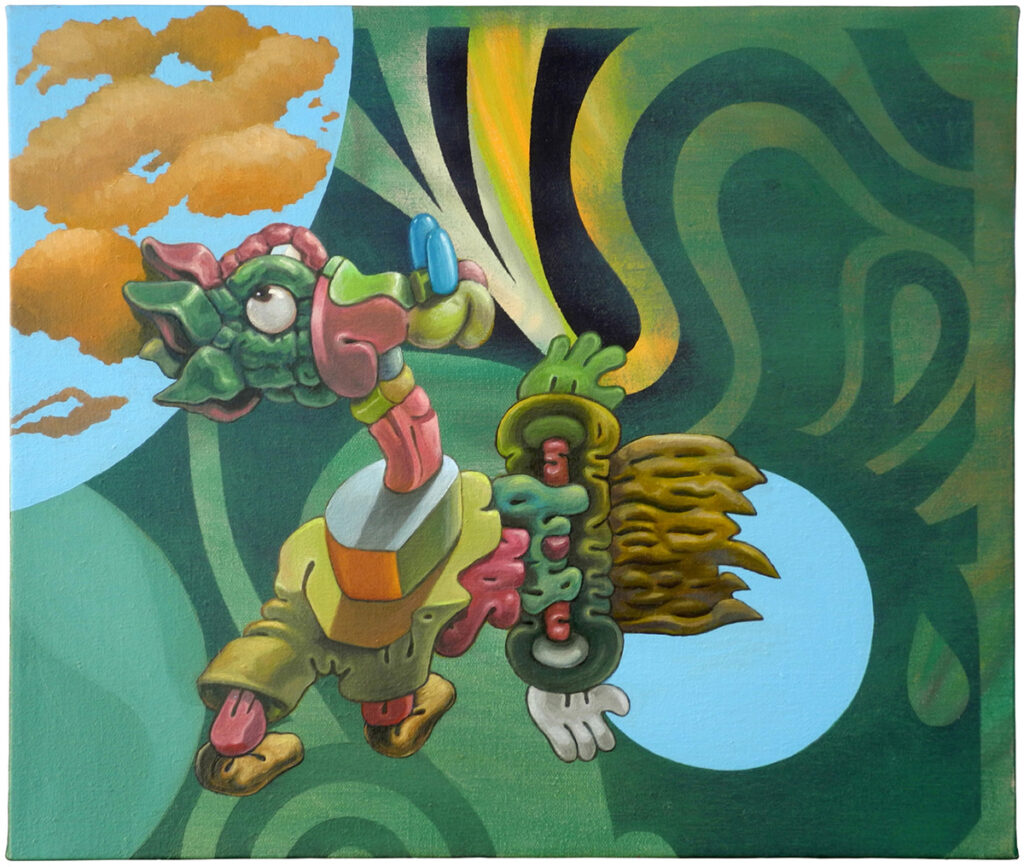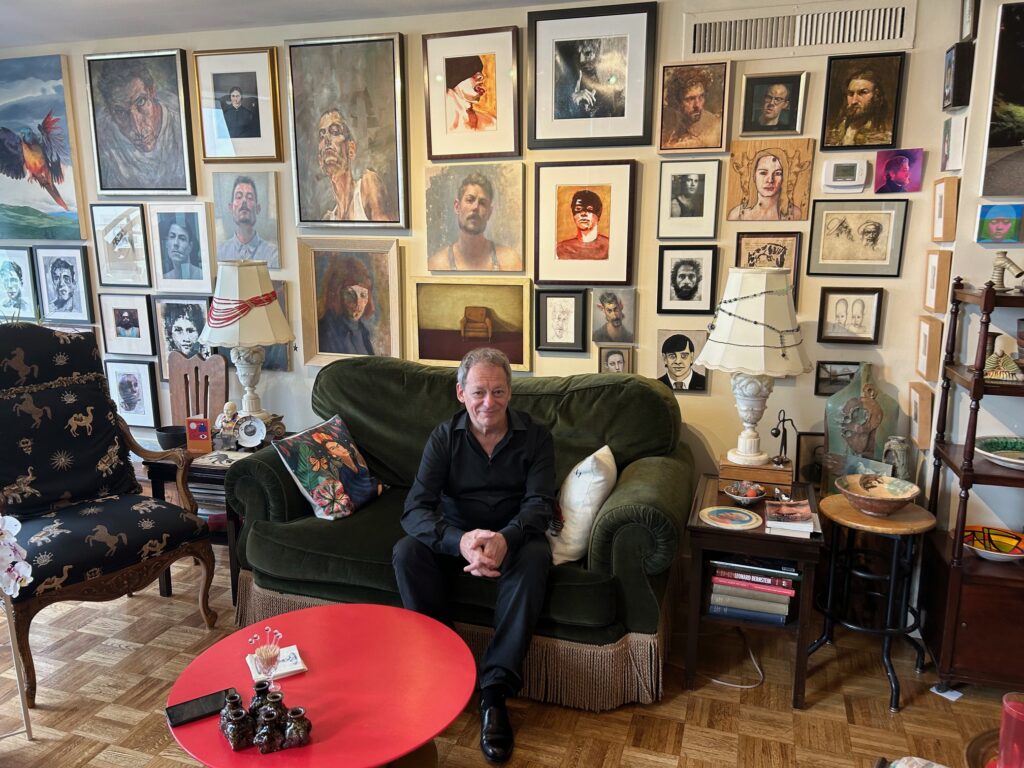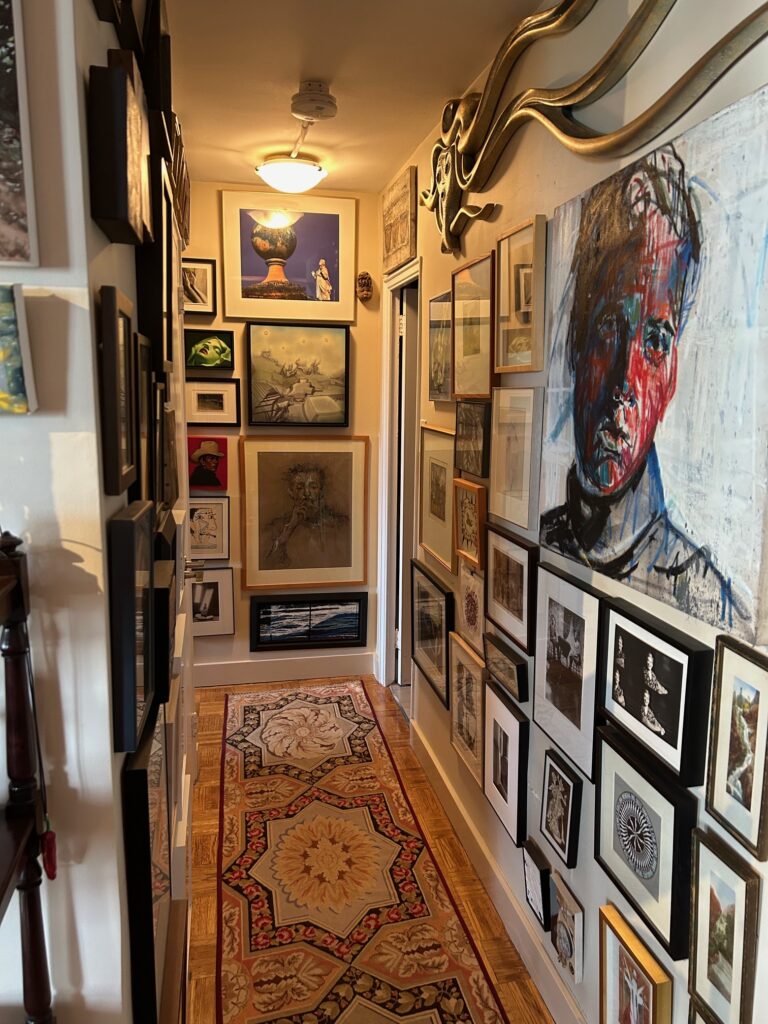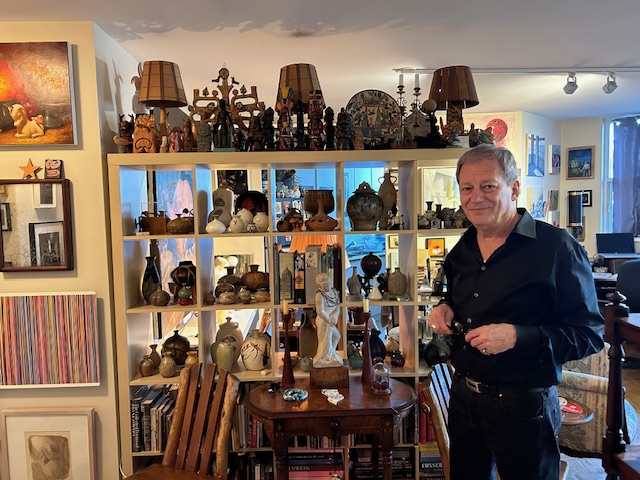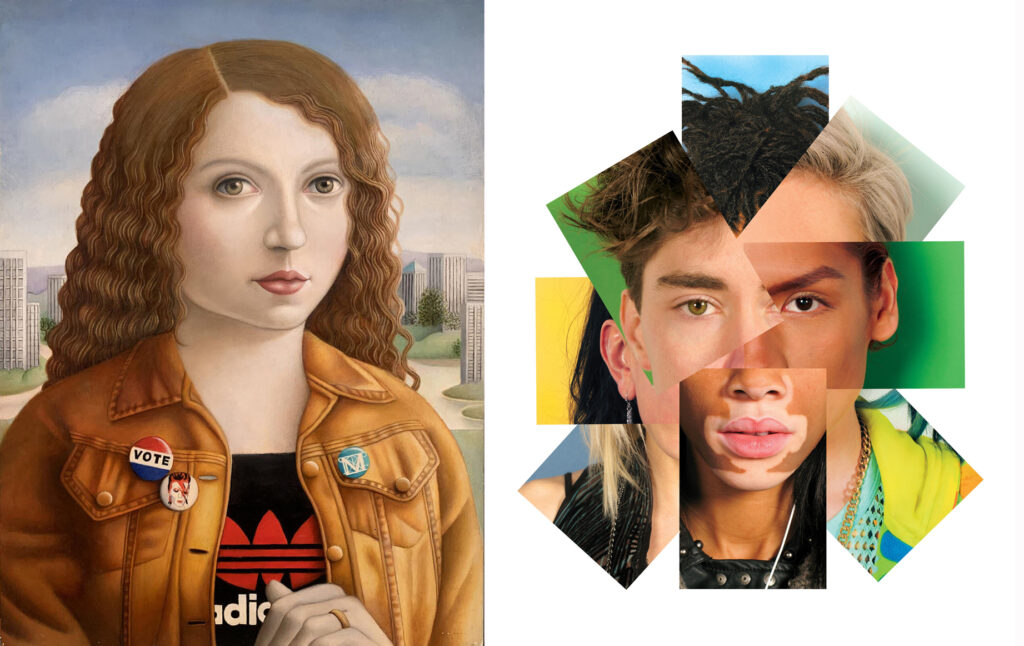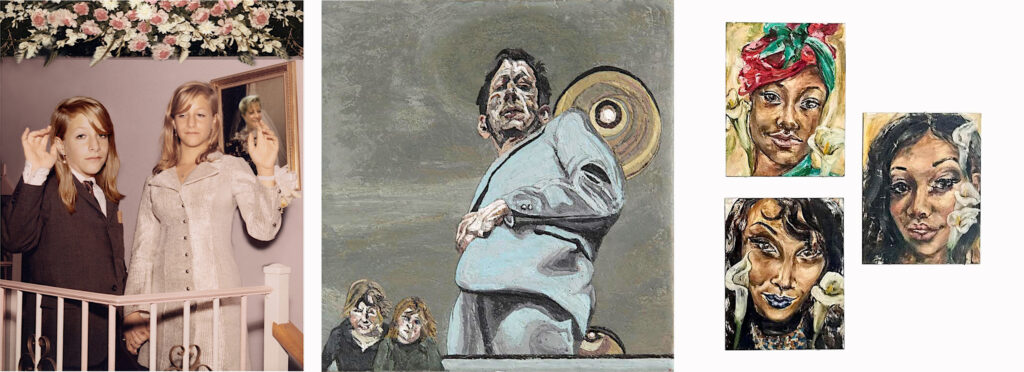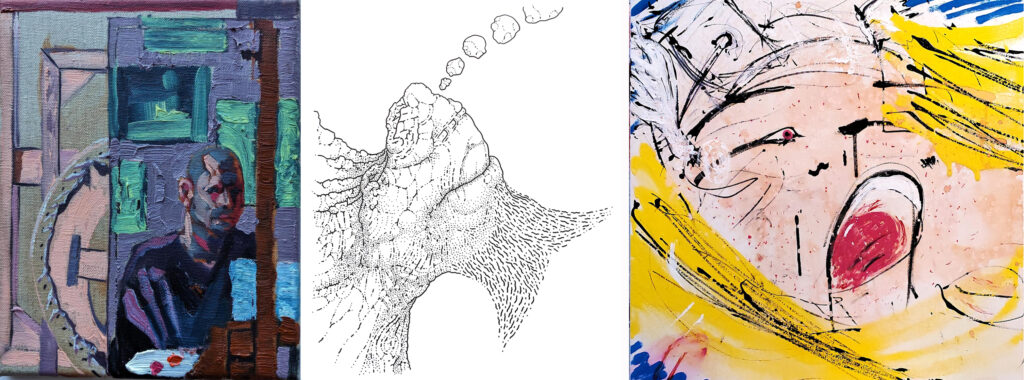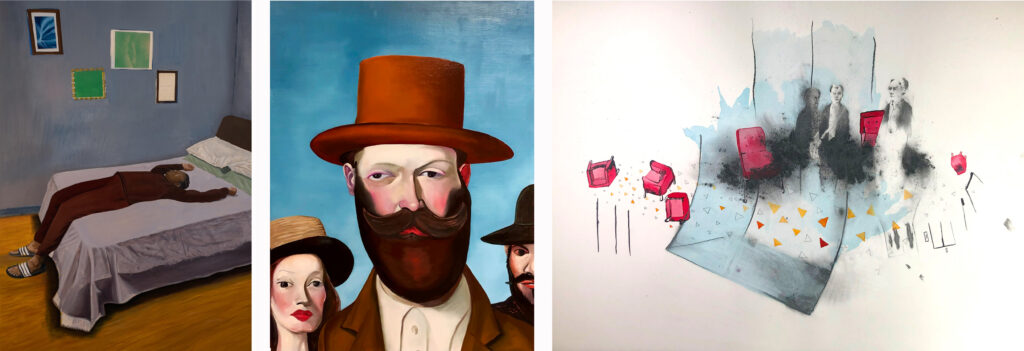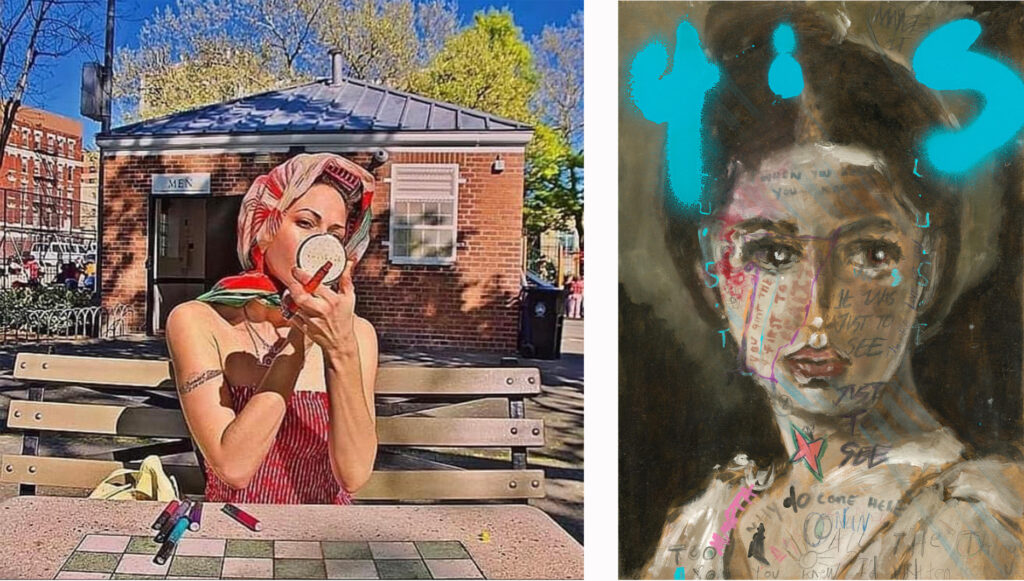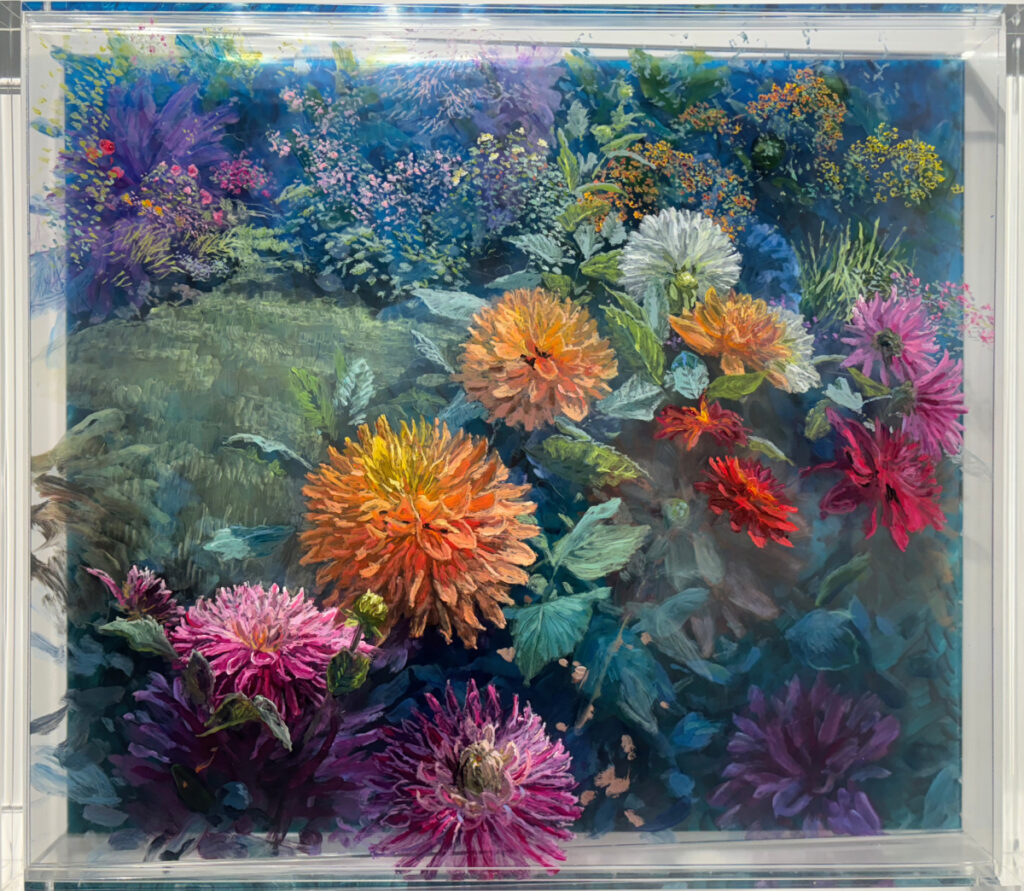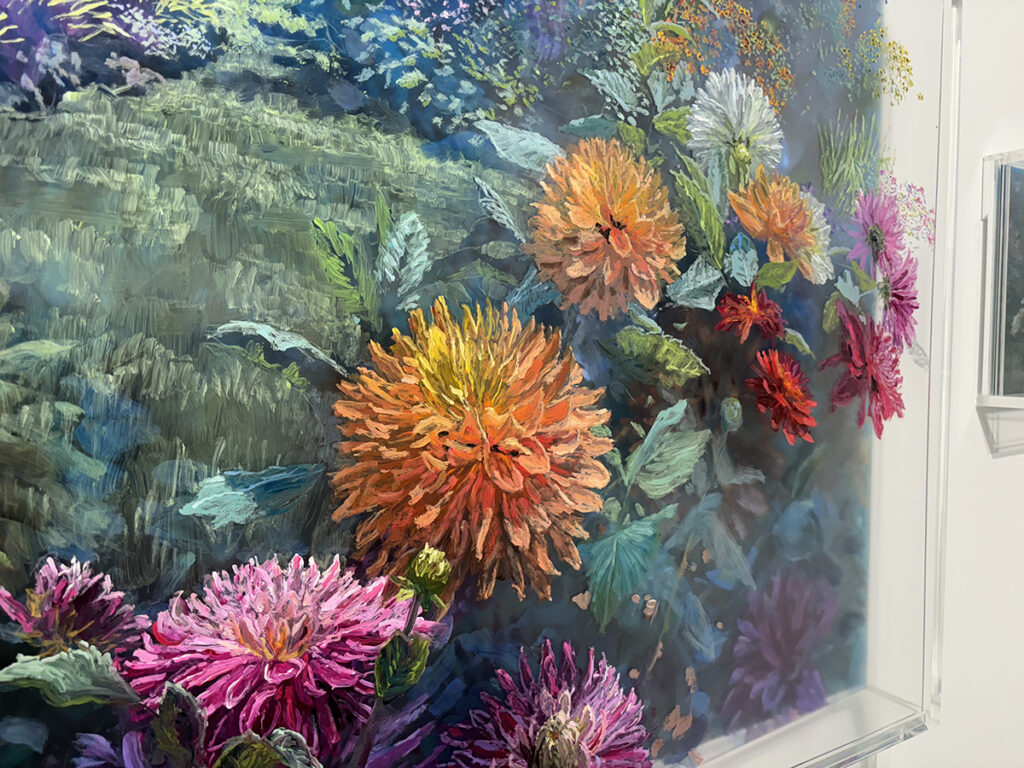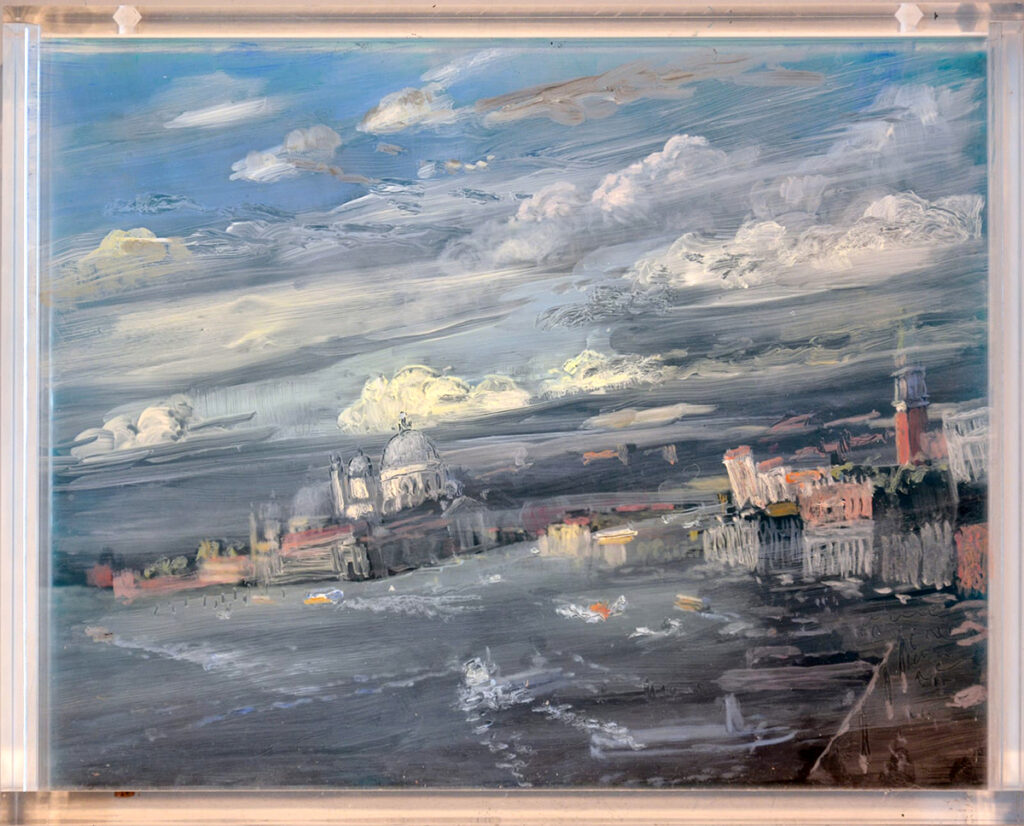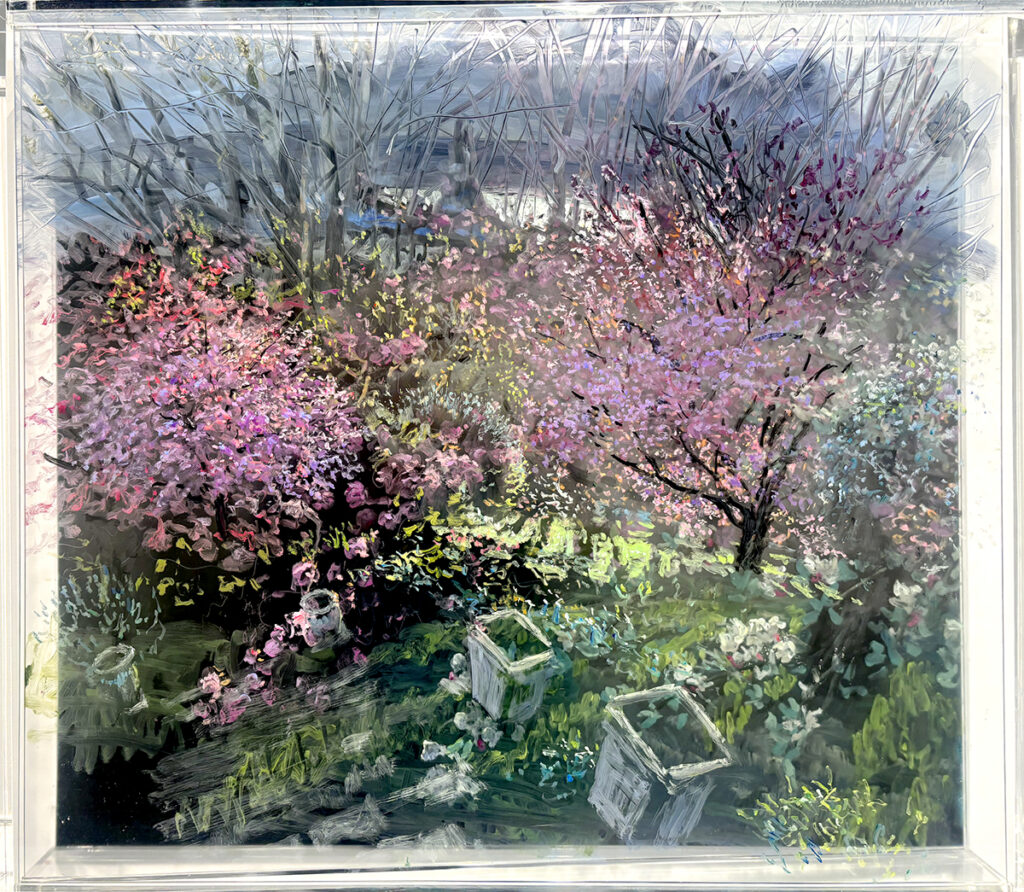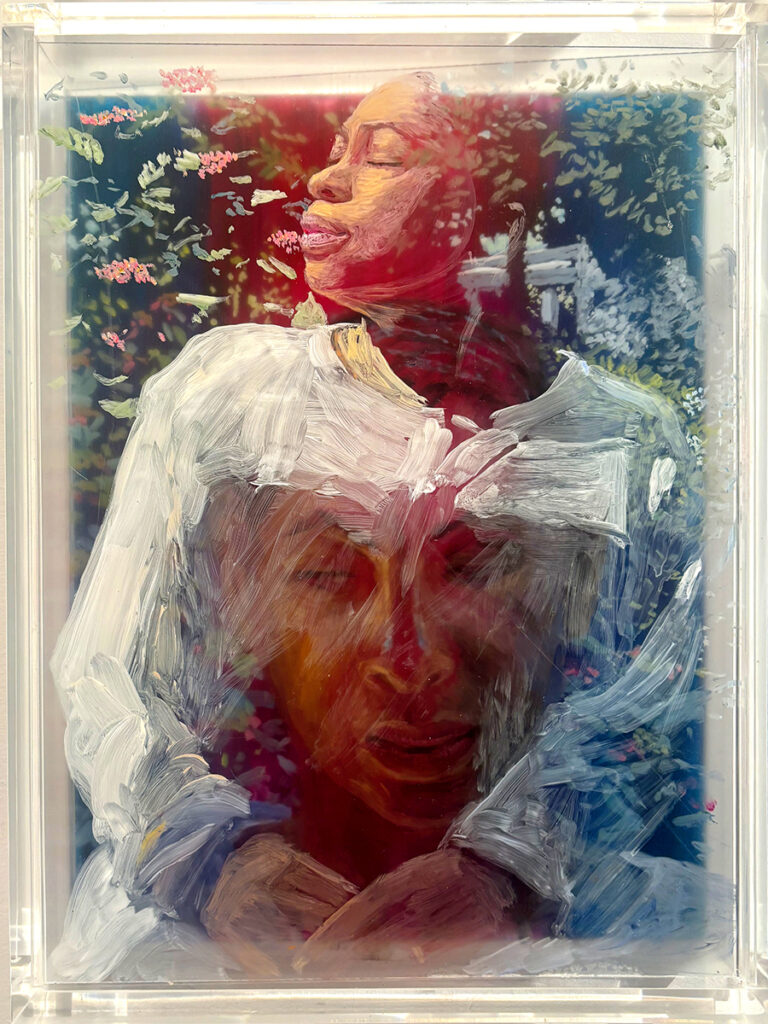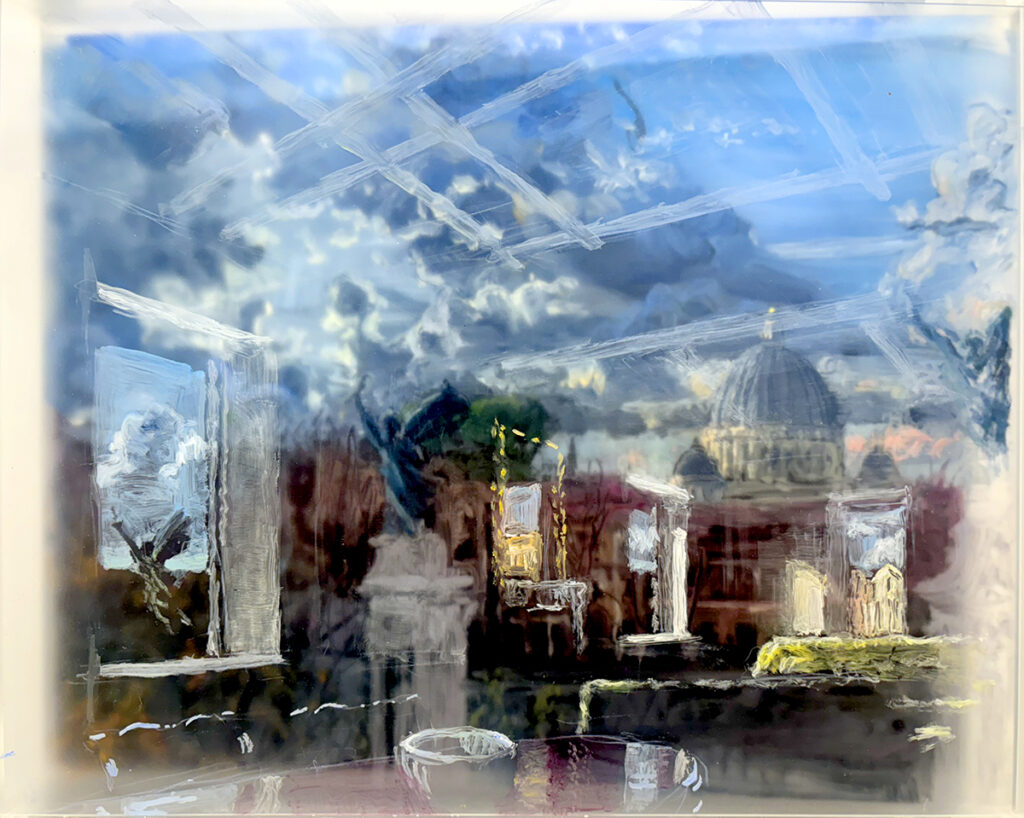by Lorien Suarez-Kanerva
The Tijuana International Triennial, which opened in July 2024 and runs through February 2025, offers a compelling exploration of contemporary themes like corporeality, identity, and land. Curated by the renowned Brazilian professor Leonor Amarant, this year’s edition brings together a diverse range of international artists, including Miami-based Venezuelan artist Rafael Montilla. A returning participant, Montilla, previously exhibited Big Bang Mirror, a thought-provoking installation that challenged notions of time and space, in 2021. This year, he presents Door to the Universe, a sculpture that deepens his exploration of conceptual and spatial relationships.
Montilla’s work spans photography, sculpture, and performance, with his iconic Kube Man persona receiving particular acclaim. Having performed at prestigious venues such as the Venezuelan, German, and French pavilions at the Venice Biennale, Montilla’s work delves into the interplay of identity, perception, and public engagement.
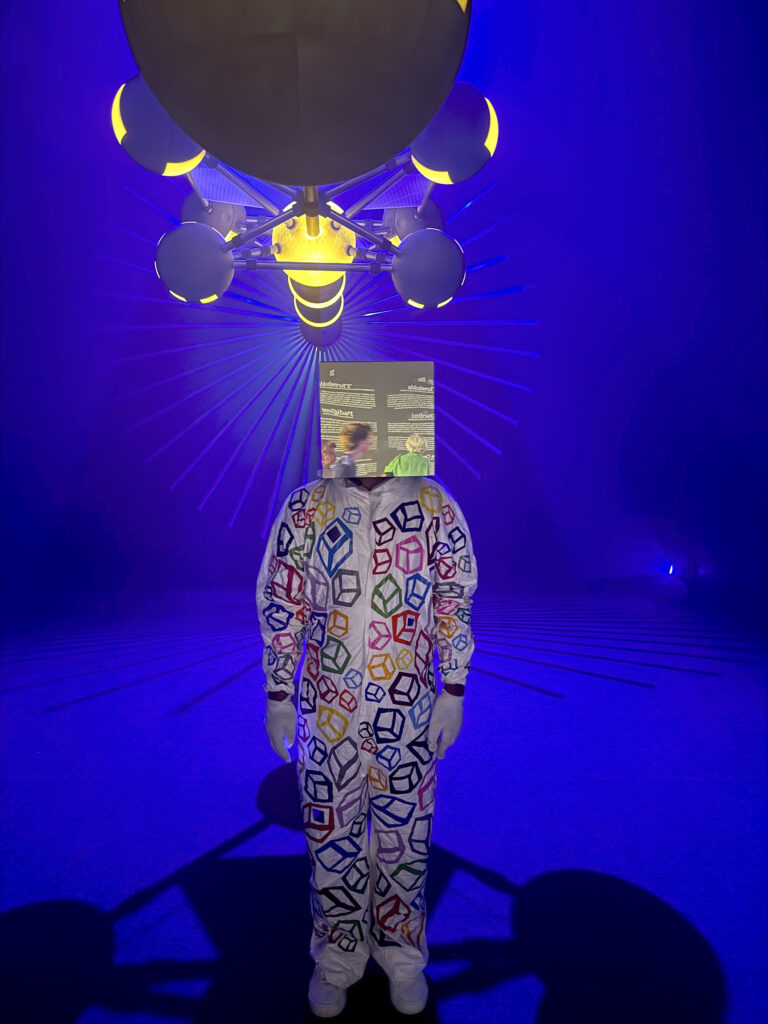
At the heart of Montilla’s practice is the cube, a recurring motif throughout his work. Whether it appears as a hollow geometric form or a mirrored object, the cube becomes a tool for exploring identity. In performances like Kube Man, Montilla dons a cube-shaped mirrored helmet, erasing his face and replacing it with the reflections of his environment. This act invites the viewer to see themselves in his place, transforming their role from passive observer to active participant.
Montilla’s performances align with Nicolas Bourriaud’s theory of “relational aesthetics,” a concept in contemporary art where meaning in art arises from social interactions. Rather than presenting a fixed narrative, Kube Man creates spaces of spontaneous engagement, encouraging collective meaning-making and dissolving the boundaries between artist, artwork, and audience. This approach is central to Montilla’s artistic philosophy.
This interactive dynamic mirrors the democratic ideals outlined in the Declaration of Independence, an essential inspiration for Montilla’s Kube Man, We Are One performance. As Montilla reflects:
“Kube Man, We Are One draws inspiration from the phrase ‘All men are created equal,’ penned by Thomas Jefferson in 1776. The work uses the figure of Kube Man to symbolize the transcendence of individual differences and our deep connection as human beings. When they see me, the viewer sees themselves, recognizing that we are all part of a collective experience. In a world fragmented by divisions, this performance seeks to create a space of unity, reminding us that we all share the same essence and rights to life, liberty, and the pursuit of happiness.”
In addition to his performances, Montilla’s sculptural works also challenge perception and spatial expectations. His Golden Cube sculpture at Florida International University’s North Campus presents a striking interplay of gravity and balance. The cube positioned precariously in one corner defies expectations of stability, creating a visual tension that draws attention to the relationship between form and space. Montilla destabilizes the viewer’s perception through this precarious balance, making the impossible seem possible.

In his latest work, Door to the Universe, Montilla slices a cube with five horizontal bands, creating a compelling visual interplay between exterior form and interior void. The cobalt blue exterior world contrasts with the yellow interior introspective sphere, while a suspended mirror invites contemplation of the void within. Montilla’s use of negative space evokes the minimalist tradition of Donald Judd, yet the work carries symbolic meaning beyond its formal properties.
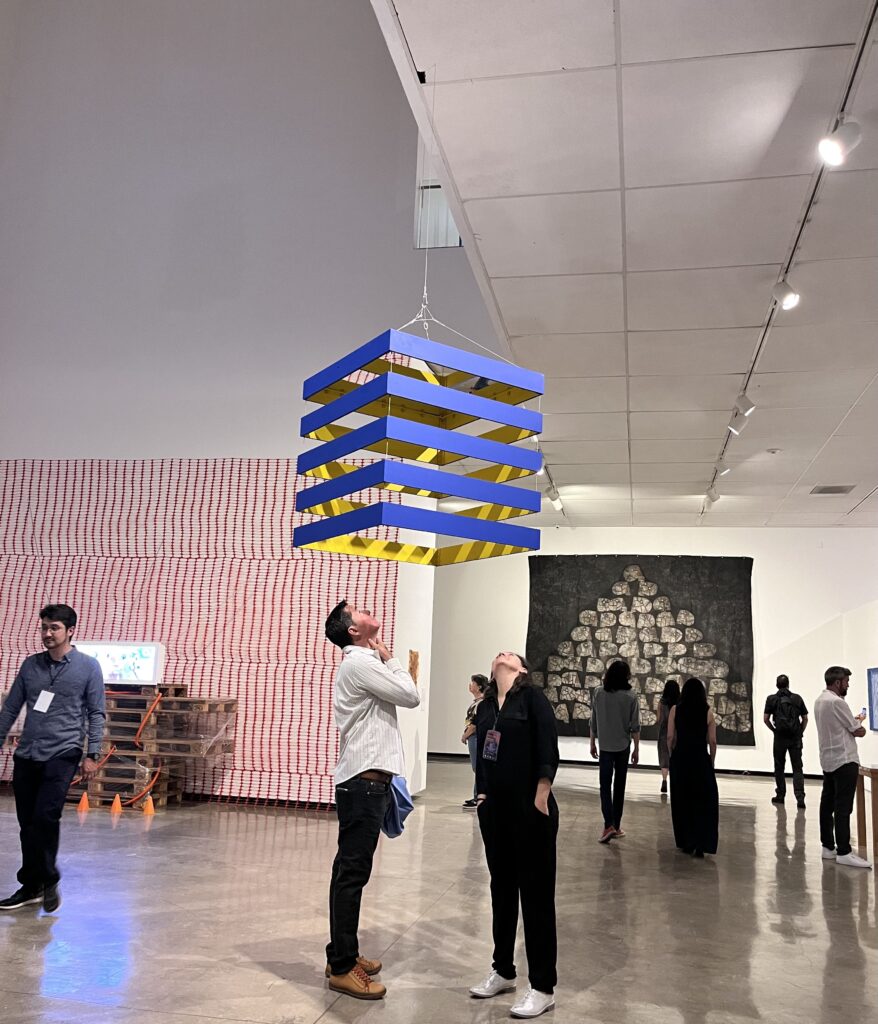
Montilla draws inspiration from Venezuelan artist Jesús Rafael Soto, whose work with geometry and abstraction has been a significant influence:
“Soto used geometry and abstraction to create a dynamic visual language. His pursuit of order and harmony through form and color has deeply influenced my work. Like Soto, I use geometric shapes, such as the cube, to represent ideas of unity, interconnectedness, and balance.”
For Montilla, the void is not simply an absence but a space of positive potential. Influenced by his decade-long stay in India and meditation practice, Montilla sees the void as a state of heightened consciousness—an openness that transcends thought and perception. This philosophical approach informs much of his sculptural work, where empty space symbolizes possibility and transformation.
His interest in spatial harmony and integration also aligns with the work of Venezuelan sculptor Alejandro Otero. Montilla describes Otero’s influence on his approach to art and environment:
“Otero conceived his sculptures as elements that engage in dialogue with their environment. He sought a harmonious integration between artwork and landscape, creating an aesthetic experience that involves both the viewer and public space. This vision has deeply influenced my interventions in urban spaces, such as in the Big Bang Mirror series, where mirrors transform the surrounding reality.”
Montilla’s connection to iconic Venezuelan artists of the 20th Century and their broader artistic tradition situates his work amongst his art contemporaries, focusing new investigations into the meaning and relevance of art today.
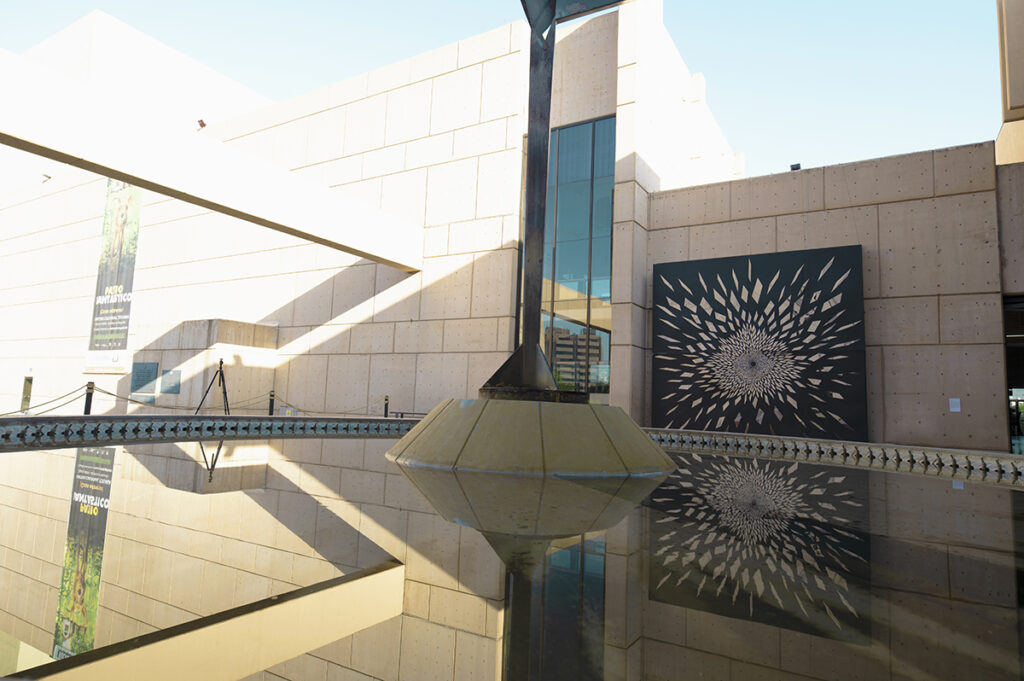
Through geometric explorations and spiritual influences, Montilla’s works invite viewers to reflect on more profound metaphysical questions concerning reality, consciousness, and the universe. He encapsulates this philosophical inquiry in his reflections on Big Bang Mirror:
“My work challenges notions of time, space, and truth, fragmenting and recomposing the viewer’s image in a play of reflections. Big Bang Mirror calls for introspection, encouraging us to explore our origins and embrace our interconnectedness with the cosmos.”
In Door to the Universe and throughout his broader artistic practice, Rafael Montilla transforms emptiness into a potent metaphor for potentiality, urging viewers to move beyond the material realm and into metaphysical contemplation. His works evoke a sense of enlightenment and transformation, drawing on the mystic and philosophical reflections of thinkers like George Gurdjieff and Sri Aurobindo. Their explorations of consciousness, the divine, and spiritual evolution have influenced Montilla’s vision, motivating him to create art beyond aesthetics. His pieces encourage a reflexive journey for the viewer, where the moment of self-recognition before the mirror invites a deeper exploration of self-knowledge, shared humanity, and the complex interplay between our internal experiences and external realities. Through this profound interaction, Montilla’s work becomes a catalyst for personal and collective insight, offering a space where art and spiritual inquiry converge.

